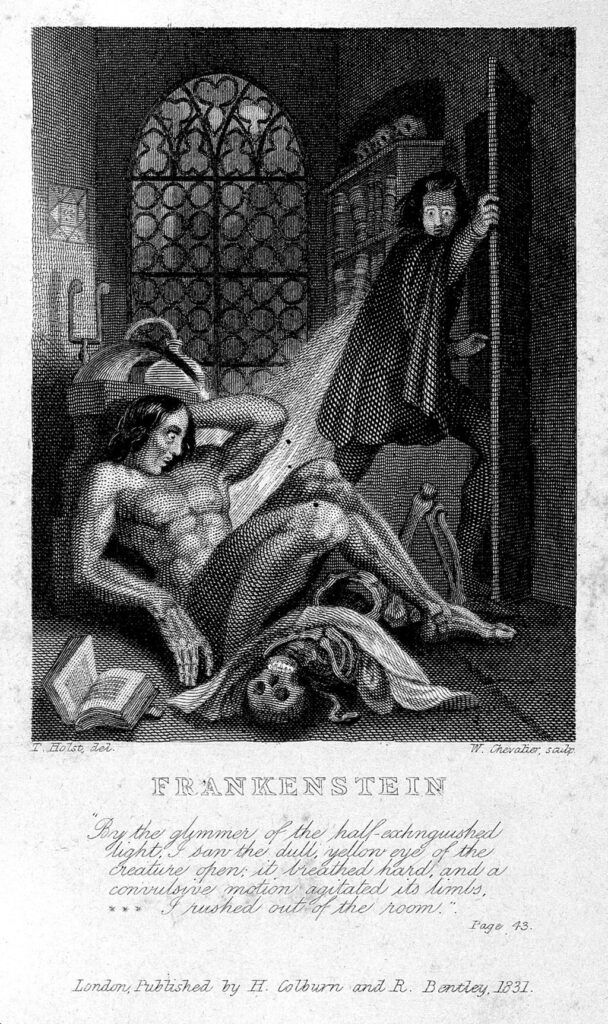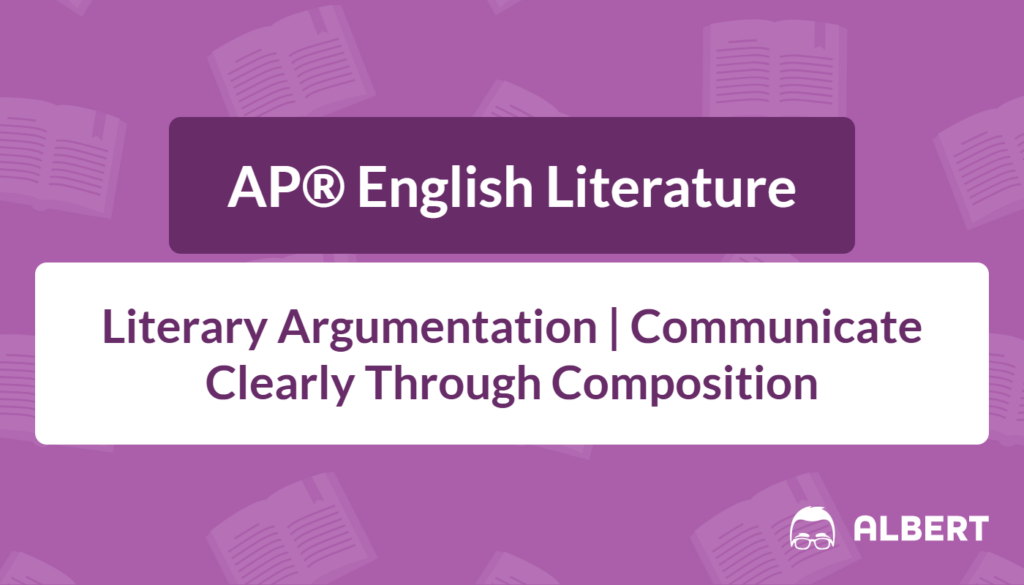Literary arguments are the backbone of analytical writing in AP® Literature, and gaining control over the elements of composition is key to conveying ideas convincingly. Crafting a claim, developing evidence, and organizing thoughts all require clarity and purpose. The following sections break down important techniques—such as concise language and varied sentence structure—to help sharpen writing skills. By mastering these techniques, students set themselves up to succeed on the AP® exam and beyond.
What We Review
Understanding Literary Argumentation
A literary argument is the carefully reasoned interpretation of a text based on details like character development, narrative structure, and theme. This type of argument does more than summarize the plot; instead, it presents a focused claim, defended by evidence from the text. A simple way to remember the goal of literary argumentation is to think of it as a conversation with the text. Readers look for passages that support, undermine, or expand upon a claim and then provide commentary to explain how these passages bolster the argument.
Consider a brief example from Kazuo Ishiguro’s Never Let Me Go. Suppose a writer argues that Kathy’s narration reveals a deep emotional repression that reflects the broader theme of denial within the novel’s dystopian world. When Kathy reflects on her past and says, “The memories I value most, I don’t see them ever fading,” she reveals a selective attachment to comforting memories. This line shows how she clings to an idealized version of the past, even as the truth of her existence becomes clearer. In a literary argument, the next step is to explain how this narrative strategy reveals Kathy’s quiet resistance to despair and how Ishiguro uses nostalgia to explore the human tendency to suppress painful truths. By grounding the argument in direct evidence, the claim becomes convincing and sets the stage for deeper analysis.
Key Elements of Composition
Clear Thesis Statement
A thesis statement is the guiding claim of a literary argument, typically appearing early in the discussion. It gives direction and tells the reader what the writer intends to prove.
- To craft a strong thesis, begin by pinpointing the most impactful idea in the text, then articulate why it matters.
- Make sure the thesis directly addresses the prompt or main question posed.
- Ensure the statement is specific yet flexible enough to allow for later exploration.
For instance, a concise thesis about To Kill a Mockingbird might read: “Harper Lee’s To Kill a Mockingbird uses Scout’s moral awakening to reveal how innocence confronts and challenges deep-seated racial prejudice in the American South.”
Notice how the statement indicates both a focus (Scout’s moral awakening) and a broader implication (challenging racial prejudice).
Example in Action
In To Kill a Mockingbird, the scene where Atticus Finch defends Tom Robinson in court exposes Scout to harsh realities about justice and racism. A strong thesis could argue that this courtroom experience shapes Scout’s understanding of morality and inequality. Step by step, the analysis would:
- Identify key moments such as Atticus’s plea for fairness despite overwhelming bias.
- Suggest that Scout’s evolving perspective reflects the tension between childhood innocence and societal injustice.
- Link this to how Scout’s narrative voice challenges readers to reconsider their own views on empathy and prejudice.
This process shows how the thesis and close reading work together to shape a convincing literary argument.
Concise Language
Concise language aims to remove needless words or ornate phrasing that can blur meaning. Clarity relies on careful word choice and direct expression.
- Eliminate filler words such as “very,” “really,” or “basically.”
- Focus on active rather than passive voice (e.g., “The author builds suspense” instead of “Suspense is built by the author”).
- Avoid repetitive statements by replacing multiple indirect descriptions with one precise explanation.
Example in Action
Before revision: “In Toni Morrison’s Song of Solomon, the author really uses symbolism and folklore in a way that deeply enriches the story because she wants the reader to understand the connection between personal identity and cultural heritage.”
After revision: “In Song of Solomon, Morrison’s rich symbolism and folklore emphasize the link between personal identity and cultural heritage.”
The second version conveys the same point more efficiently. When analyzing Milkman’s journey to understand his family history, Morrison’s succinct yet powerful imagery, such as the recurring motif of flight, evokes themes of freedom and self-discovery.
Varied Sentence Structure
Using varied sentence structure helps maintain engagement and clarity. Short, direct sentences can create emphasis, while longer, more complex sentences offer needed detail.
- Start sentences in different ways (e.g., with an adverb, a prepositional phrase, or a subject).
- Combine short statements with transition words or subordinate clauses for a fluid style.
- Use parallel structure to emphasize related ideas.
Example in Action
Consider Lord of the Flies by William Golding. A monotonous structure might read, “The boys land on the island. They try to organize themselves. They descend into chaos.”
Now observe a more varied approach: “Stranded on the island, the boys initially attempt to establish order through rules and leadership; however, fear and savagery soon unravel their fragile society.”
The varied sentence length and punctuation capture the swift collapse of civilization. Referencing Ralph’s lament, “Which is better—to have rules and agree, or to hunt and kill?” deepens the analysis of the tension between order and primal instincts.

Grammar and Mechanics
Grammar and mechanics are the technical foundations of writing. While style and creativity are crucial, errors in punctuation, spelling, or sentence construction can weaken an otherwise strong argument.
- Ensure that subject-verb agreements are correct.
- Use commas, semicolons, and colons judiciously.
- Check for misplaced modifiers and other common pitfalls, like run-on sentences.
Example in Action
In Shakespeare’s Hamlet, the sentence “Something is rotten in the state of Denmark,” stands out not only for its pivotal meaning but also for its grammatical impact. It is concise, addresses the subject immediately (“Something”), and includes a linking verb that ties the concept to its setting. This instance might inspire an analysis focusing on how brevity in a sentence can foreshadow deeper corruption. When properly punctuated and structured, the line presents a striking statement that drives thematic tension.
Coherence in Writing
Coherence in writing ensures that every paragraph, sentence, and idea flows smoothly into the next. Without coherence, even brilliant points can feel abrupt or disorganized.
Achieving coherence often requires:
- Logical organization of ideas: Arrange arguments so each point builds naturally upon the previous one.
- Transition words: Use “however,” “therefore,” “nevertheless,” or “meanwhile” to clarify connections between sentences and paragraphs.
Example in Action
A coherent paragraph exploring the theme of guilt and atonement in Atonement might begin with Briony’s false accusation that irrevocably changes Robbie’s fate, then move into her lifelong struggle to seek forgiveness through writing, and close by examining the novel’s final revelation about the blurred line between fiction and reality. Each idea flows chronologically and thematically, illustrating how the consequences of a single action reverberate across time and narrative perspective.
In contrast, a disorganized paragraph might mention Briony’s childhood, then abruptly shift to Robbie’s time in the war, and suddenly discuss Cecilia’s feelings without connecting these moments. Readers would find it difficult to trace the development of guilt and redemption, highlighting the importance of coherence in writing for clarity.
Enhancing Your Argument
A well-structured argument can become even stronger through deliberate use of supporting details, interpretive commentary, and insights into the text’s larger message.
- Provide textual evidence to demonstrate the basis of each claim.
- Follow that evidence with analysis that clarifies why it is significant.
- Conclude by tying the claim back to a broader theme or interpretation.
Example in Action
Khaled Hosseini’s The Kite Runner offers many thematically rich passages. When analyzing the impact of guilt and redemption on personal identity, a writer might quote Amir’s reflection: “I became what I am today at the age of twelve, on a frigid overcast day in the winter of 1975.” This line signals the pivotal moment when Amir’s betrayal of Hassan irreversibly shapes his future. After including the quote, explain how Amir’s guilt drives his later quest for redemption, illustrating how personal actions can haunt an individual and compel transformation. Connect this insight to the novel’s broader exploration of forgiveness, loyalty, and the possibility of atonement. This chain of evidence, commentary, and connection to theme transforms a basic observation into a persuasive discussion.
Practical Application: Writing Your Own Literary Argument
Building a literary argument works best when it follows a logical progression:
- Draft an outline that identifies the text, main claim, and the sub-points you plan to explore.
- Develop a working thesis to guide your research and close reading.
- Gather relevant quotes, then place them into body paragraphs as evidence.
- Revise to ensure you use concise language, varied sentence structure, and correct grammar and mechanics.
- Check for coherence in writing: Do all sentences flow naturally? Are transitions clear?
- Request peer feedback if possible. A fresh set of eyes can often spot inconsistencies or unclear logic.
This drafting process can be repeated for short fiction, poetry, longer fiction, and drama. Each time, focus on how genre-specific elements—like line breaks in poetry or stage directions in drama—can influence the argument.
Quick Reference Chart of Key Vocabulary
| Term | Definition |
| Literary Argument | A reasoned argument about a literary work that interprets evidence. |
| Thesis Statement | A sentence that states the main point or claim of an argument. |
| Coherence | The quality of being logical and consistent in writing. |
| Transition Words | Words that connect ideas and help the flow of writing. |
| Conciseness | The quality of being clear and brief in expression. |
| Sentence Structure | The arrangement of words in a sentence, including complexity. |
Conclusion
The elements of composition—from a clear thesis statement to polished grammar and mechanics—are the building blocks of impactful literary analysis. By practicing concise language, integrating varied sentence structure, and maintaining coherence in writing, any student can transform raw ideas into compelling arguments. These techniques ensure that each discussion of a literary text, whether a Shakespearean tragedy or a modern novel, feels unified and purposeful.
Final Tips for AP® English Literature and Composition Success
Above all, remember that literary argumentation thrives on evidence-based reasoning. Textual details are never used just for decoration; instead, they illuminate how a piece of literature conveys character, theme, and meaning. Frequent revision, thoughtful peer review, and familiarity with multiple genres can further enrich writing. The ultimate aim is clarity, tying every observation back to a guiding claim. By developing these communication skills, students will be prepared to excel on the exam and confidently navigate advanced literary discourse.
Sharpen Your Skills for AP® English Literature and Composition
Are you preparing for the AP® English Literature and Composition test? We’ve got you covered! Try our review articles designed to help you confidently tackle real-world AP® English Literature and Composition problems. You’ll find everything you need to succeed, from quick tips to detailed strategies. Start exploring now!
- AP® English Literature: Claim and Evidence
- AP® English Literature: How to Write a Thesis Statement
- AP® English Literature: Commentary and Reasoning
- AP® English Literature: Textual Evidence
Need help preparing for your AP® English Literature and Composition exam?
Albert has hundreds of AP® English Literature and Composition practice questions, free response, and full-length practice tests to try out.








